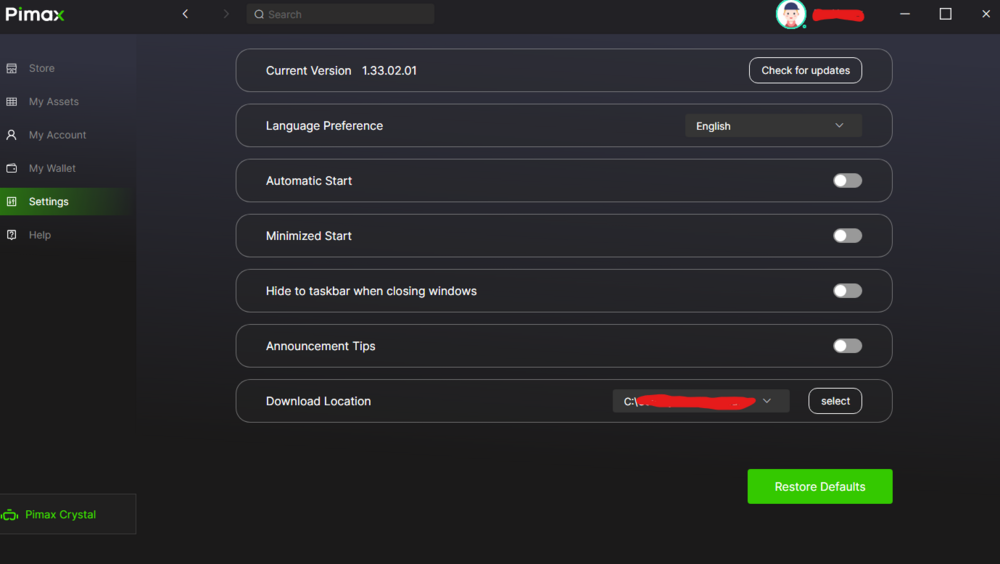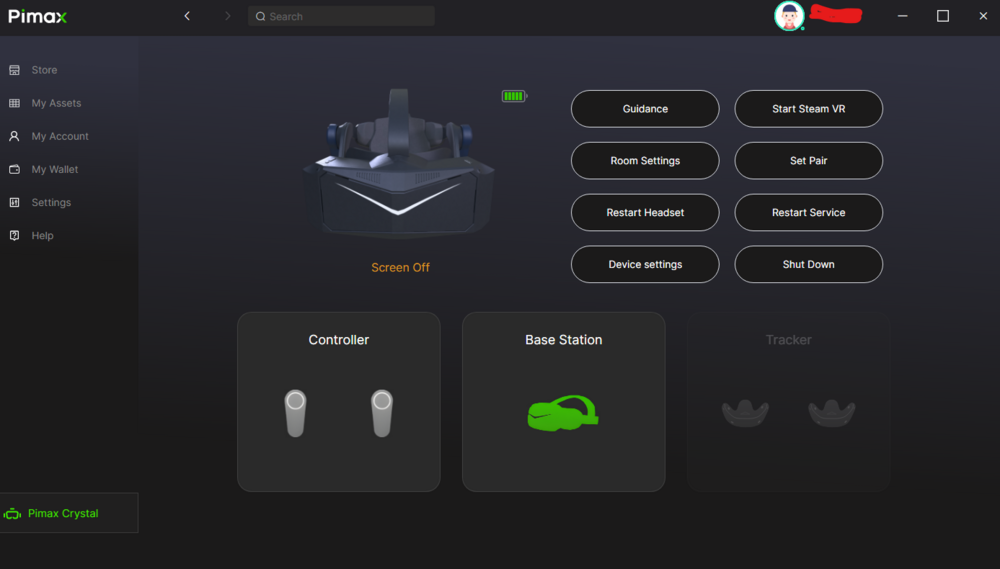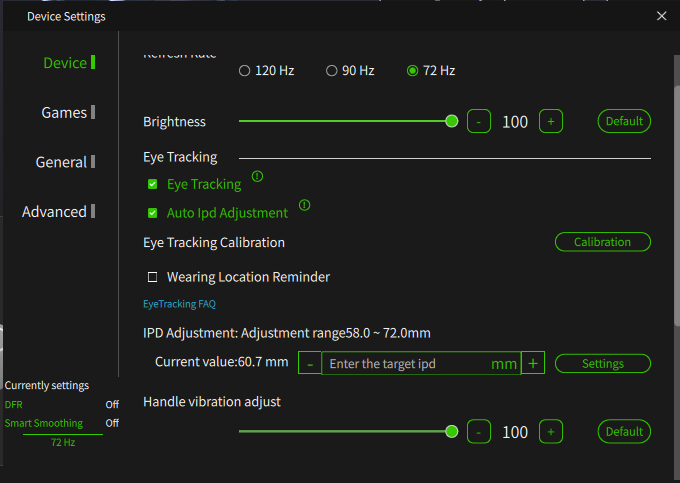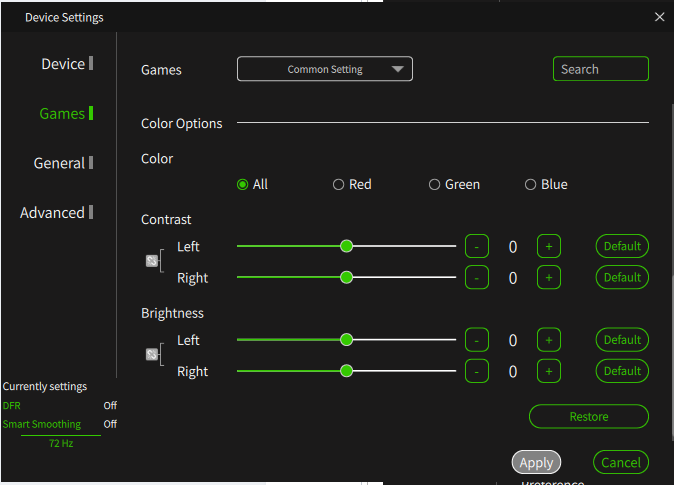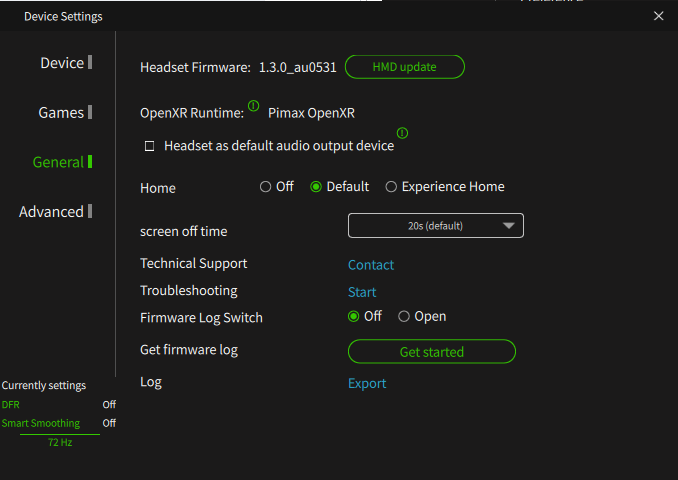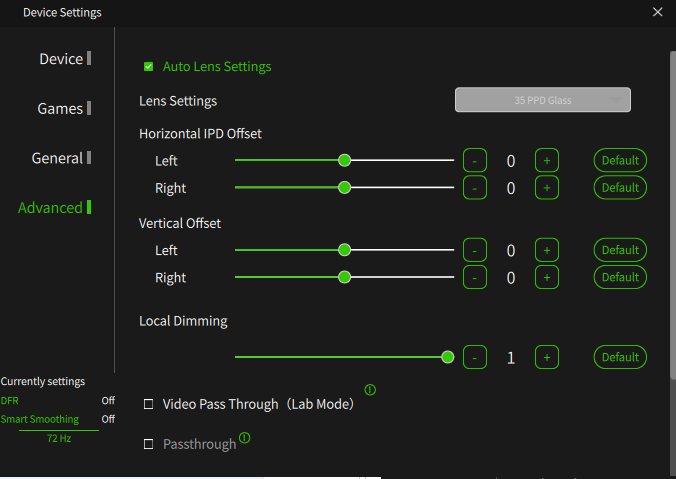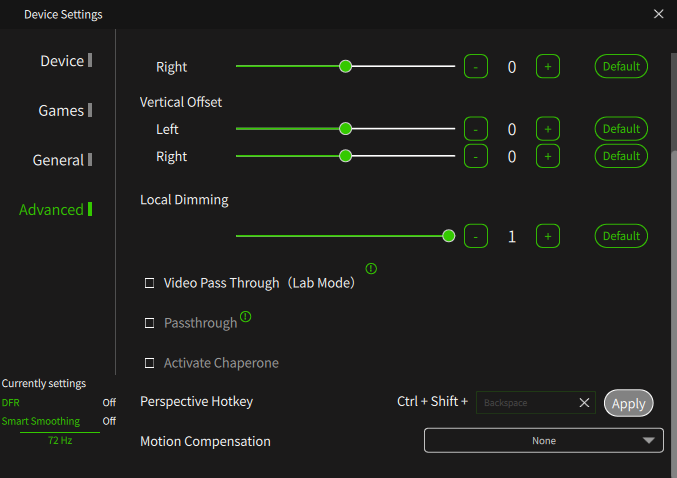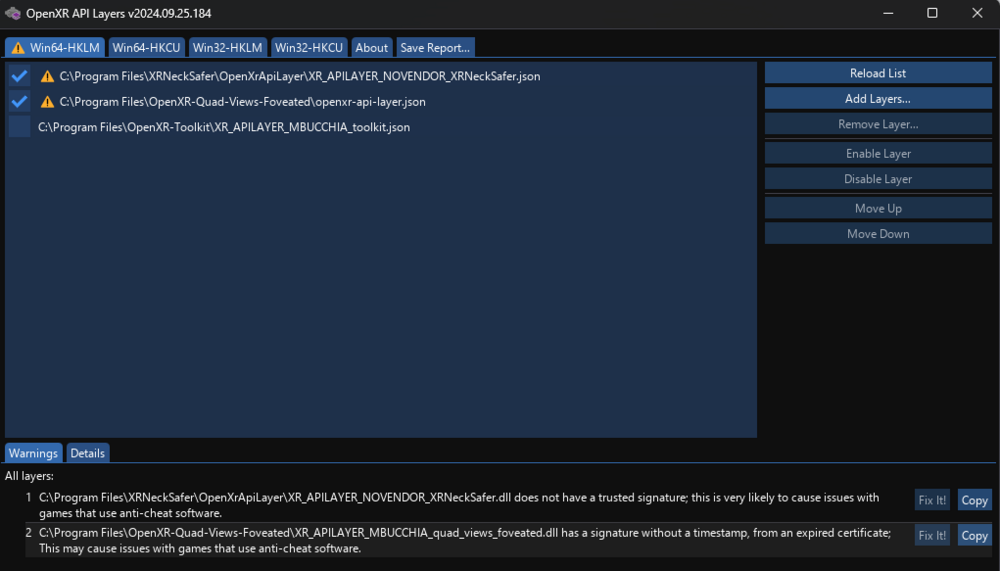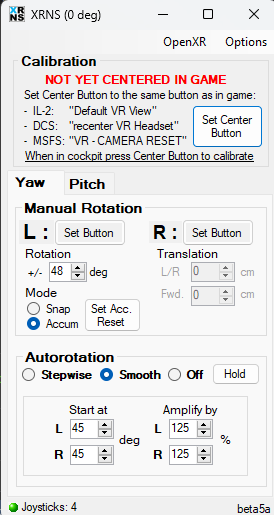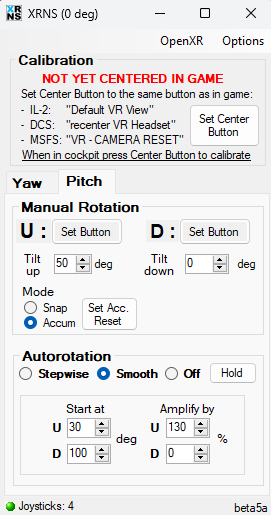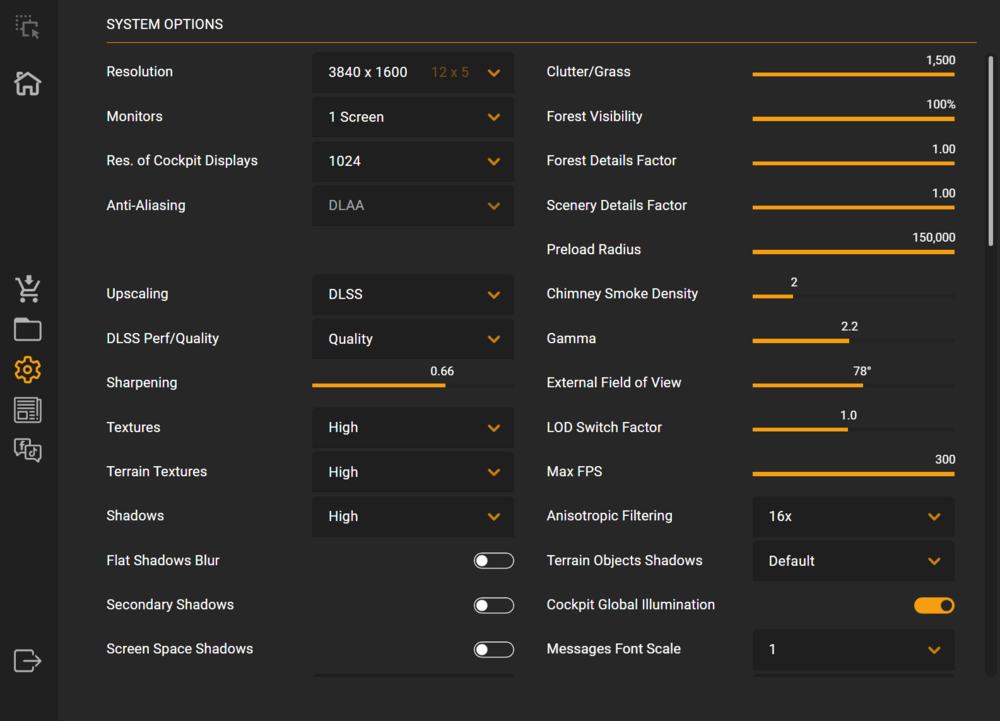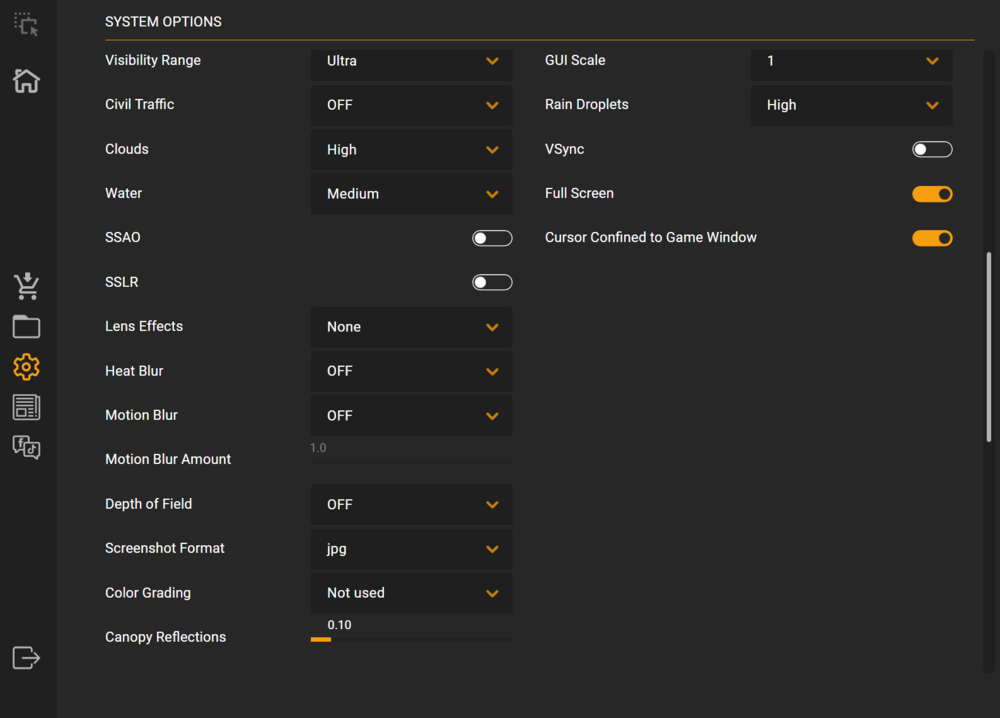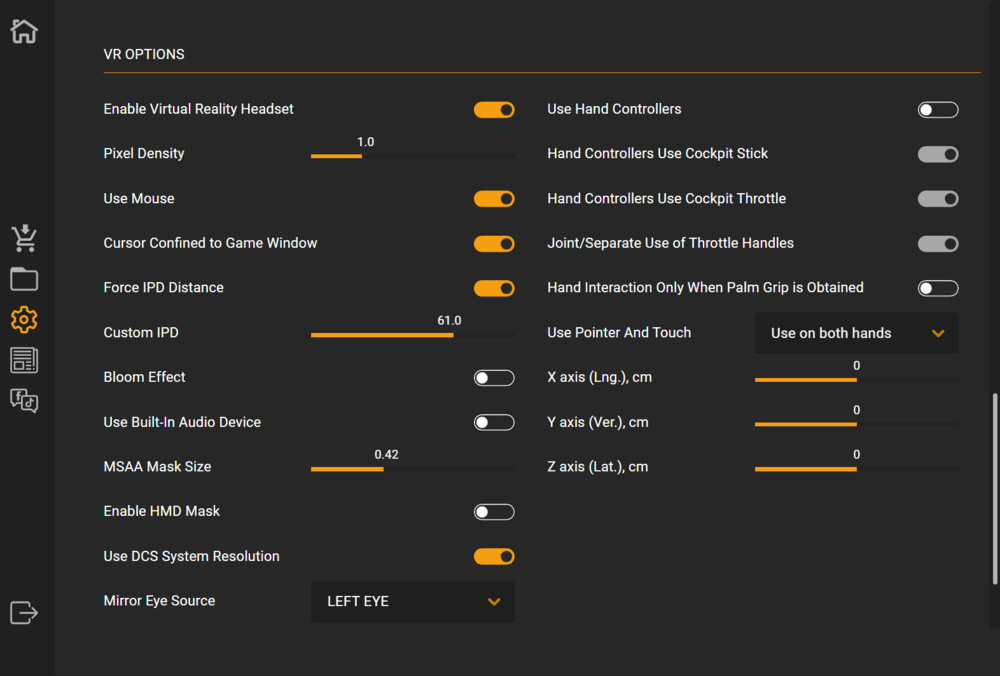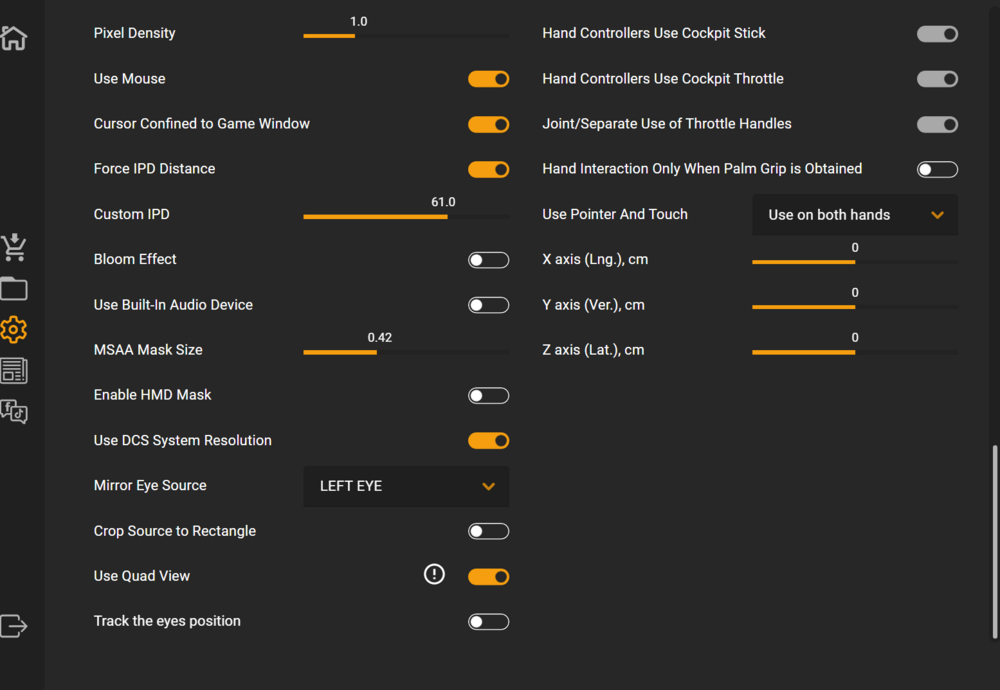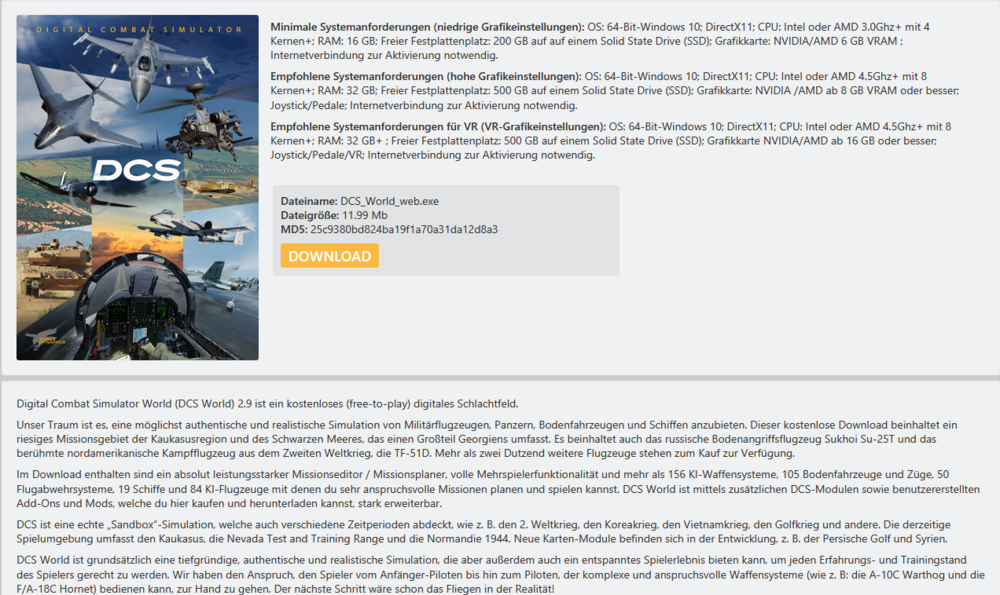-
Posts
772 -
Joined
-
Last visited
-
Days Won
3
Content Type
Profiles
Forums
Events
Everything posted by Nedum
-
Firstly, the Lighthouse is more >>precise<<, but has other big issues coming with it. As every system, none likes reflection from surfaces. The inside outside tracking system are more immune against reflection. If you want to be happy with a Lighthouse system, you have to minimize every reflection, best is none. Mirrors are a no-go! The same with reflection from any kind of glass (Windows). I had to switch my game room into a "dark room" to get the Lighthouse working without "dropping hands". After a while, I switched back. Till now, I never missed the Lighthouse. Pimax did a great job. It's not as >>precise<< with the >>hand controllers<<, but I can't feel any difference with the tracking of my headset. It's outstanding good. What you have to know. The IO-Tracking doesn't really like dark rooms and walls painted in only one color. If you have only white walls, put some stickers or paintings on it. Easy fix. Personally, I can't recommend investing money in a Lighthouse system. The effort exceeds the costs and the result. Too bright light can cause an issue too. IO-Tracking prefers indirect light. Don't blend the cameras of your Headset.
-
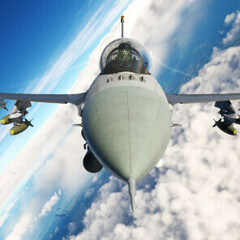
Will I loose something in DCS switching from a G2 to a Quest 3?
Nedum replied to Galinette's topic in Virtual Reality
I can't see how the first point could be debatable? I clearly can see a Screen door effect within the Quest 3 (yes, I own one ;)), but I can't see one in the G2 (I own it too ;)). For me, it was and is an absolute downgrade in sharpness. You have the points with the overall clarity and the really HUGE sweet spot. That's awesome. Fully agree! The Point with the need of a better Strap, I told so. Over all, someone asked If he would miss something, and I told him, what he would miss if he buys a Quest 3. And I'm told him that he has to invest more money to fix it. None of my points were wrong. So, I have to ask why you guys let it sound like I told something wrong? -

Will I loose something in DCS switching from a G2 to a Quest 3?
Nedum replied to Galinette's topic in Virtual Reality
He asked if he would miss something, not if this isn't fair because of restrictions. -
Thank you for that. I had the same problems but could solve them with doing all the Room settings sitting in my Flight rig. That fixed all the issues. Nice to know there is an easy way to do the same without doing all the room setting stuff.
-
Das mit der F18 habe ich auch so erlebt. Vor allen Dingen muss man richtig mit dem Stick kämpfen. Das hatte ich anders erwartet. Seltsam ist, dass man den Stick bis zu einem Punkt schwer heranziehen kann, um dann mit mehr Kraft über den Punkt rüberziehen zu können, was allerdings nicht zu mehr Ruderausschlag führt. So habe ich mir das immer in der MiG29 und SU27 vorgestellt. Dort konnte ich das allerdings so nicht feststellen. Ich glaube, da wird aber noch etwas von ED kommen. Wird aber mit Sicherheit keine Priorität haben. BTW: ist bei euch auch der Edit-Button verschwunden? Musste für die Antwort einen neuen Kommentar eröffnen. Edit: über die drei Punkte lässt sich ein Posting doch editieren. Jetzt erst gesehen.
-
@Sofapiloz Man kann die Federkraft ganz ausstellen. Ich muss mir das noch einmal ansehen. Ich glaube, das war, wenn man FFB in DCS im Menü abstellt (Haken rausnehmen). Dann funktioniert nur das Telemetrie FFB. Aber sicher bin ich mir nicht mehr. Ich habe mittlerweile einiges geändert und fliege die Huey leider nicht mehr so oft. Wenn ich mich richtig erinnere, hatte ich in der MOZA-SW die MI als Heli ausgewählt und FFB in DCS deaktiviert. Der Stick bleib ohne Trimmknopf nutzen zu müssen exakt dort wo ich hinbewegt hatte. Das war aber mit dem Apache. Versuch macht "kluch". ;)
-
Nicht gerade eine konstruktive Kritik. Ich besitze die MOZA FFB Base seit einem Monat und bin recht angetan. Auch die von dir weiter unten erwähnten Probleme habe ich überhaupt nicht. Nutzerbericht: Wenn man in der Software auf integrated FFB stellt, bekommt man einen Mix aus Telemetrie und FFB aus dem Spiel. Angebracht an meinem Simulatorsitz (mittig) von Next Level, werden alle Vibrationen komplett auf den Sitz übertragen. Selbst wenn ich den Stick nicht zum Fliegen nutze, weil ich den Sidestick der F16 benutze, bekomme ich alles mit. Egal ob ich Chaff und Flares ausstoße, die Fahrgestelle ein oder ausfahre oder wenn ich Waffen abfeuere oder Bomben abwerfe. Die Russenjets lassen sich jetzt auch viel besser fliegen, weil das Trimmen endlich so funktioniert, wie es soll. Geht viel feinfühliger. Aber so richtig gut wird es im Heli oder den Warbirds. Das ist ein ganz anderes Fliegen. Das Trimmen im Heli ist einfach nur traumhaft. Und in den Warbirds kann man jetzt genau am Rand zum Stall fliegen. Das Popometer ist zurück. Einfach genial. Es gibt aber auch Schwächen. Auf dem Boden vermisse ich die Rückmeldung beim Rollen, Abheben und Landen. Ob das an DCS oder an der Moza-Software liegt, kann ich nicht sagen. War bisher der beste Kauf einer Joystick-Base für mich.
-

Will I loose something in DCS switching from a G2 to a Quest 3?
Nedum replied to Galinette's topic in Virtual Reality
You will miss: 1: sharpness The resolution in the sweet spot of the G2 is much, much better! 2. Colors The Colors of the G2 are better 3. Playtime The battery will be empty in less than 1.5 hours if you play maxed out using VirtualDesktop 4. Comfort The Q3 with the standard Headstrap is extremely front heavy. Yes, the Q3 is light, but yes, the Q3 basic Headstrap is BS, to say it nice. You need an extra comfort Headstrap. 5. Sound The G2 has a so much better sound. No comparison! To make the Quest 3 Simulator ready, you have to invest 150-350+ extra Dollar. If you are looking for a Sim Headset, try a Pimax Crystal Light. This Headset is the better deal if you only want to play Sims. -
There is a woman pilot voice all the time. Is that the voice overlay for the player pilot?
-
The only part I've missed, is the one where you stop telling me what I have to think. I read exactly what ED have written. Who are you, asking me such an insulting question? Are you a Mod or something else? Stop hitting always on people finding things not working anymore as before, and stop pointing to documents or Vids NOT explaining at all the changes ED have made. With every new patch, we find more and more things working not like they did before. And we are waiting since 2 Years for a new document which can explain why things have changed, in what way and the most important part, what we have to do to make all the stuff working like it should. Links to outdated documents, outdated Forum Post or Vids not hitting the issues I am looking for, are no fun. Especially if we have to know what part of the document is not outdated. Instead, we are running into trouble after spending an hour or more of flying a mission, because things are not working anymore like before after each new patch. And if we complain, people like you coming in, and I don't know why, telling us to read stuff within outdated documents or looking Vids, not even touching the problem we were running in. So what's up with YOU? Who are YOU that YOU are thinking YOU are allowed telling people they should learn to read and understand? Stop insulting people for getting upset if they spent hours, days, weeks, months to find issues, sort them, compare them and try to figure out is this a new feature or a new bug, because there is no fitting documentation, and their findings are perhaps not right. STOP to make it look like that all the people, the customers, are the problem and not all the bugs, bugs, bugs and the missing adapted documentation of all the new stuff! We have learned for years the wrong way to do things, because ED told us, that's the right way. And now we have to learn it in a completely different way WITHOUT any adapted documentation. We have to guess if this can be a new bug or a new behavior. And we have to figure out on our own how things should work and to let them work in the right way and how to set up the systems the new way, if it's not a bug. And If we become upset, after such a long time without any good documentation of all the new behaviors and new doings, people like you hitting on us? Are you for real? What many of us want is not the "in 2 weeks" excuses without any ETA. We want that ED start to fix the bugs WITHOUT adding new ones and give us the adapted documentation of the new features and the doings to let them work the right way. Only for understanding: With this patch they added a new bug, again, without fixing the old one, again. Not only TMS long right is not storing the TWS to the Mastermodes (AA or NAV), no, now TMS long right is emulating the OSB Button press, switching through the VIS Mode also. A new bug, without any reason, and the old one is still there. It's like this is becoming a tradition for the F16. If ED is still doing "bug fixing" in this strange way, who can believe they can do it later the right way? I've really lost all of my hope on that. The F16 is dead meat right now for me! I don't know what ED and you are thinking, but if you really think I am, a costumer, is the problem and not all the bugs, the missing communication and the missing documentation, then there is something wrong with both of you! All the problems coming from the massive amount of bugs, and how ED treats its customers. I can trust you, it's not me who is adding bugs or doesn't allow ED to deliver adapted documents for all the new features. If you were a costumer, buying a car from me. And I am explaining to you, you can have the unfinished product cheaper, but I have to add all the missing stuff later to the car, and you can help me with the bug fixing, and you are happy with it and buy the cheaper car. Would you are still happy with the following situation? You do all the bug fixing and spend hours of time, unpaid time. After a year, you drive hours into a vacation, and the car strikes. You spend hours to find the issue. You can't find a fix and call me. I am telling you your documentation is outdated, and you run into the issue, because the doings are new, and you have done them the wrong way. The new handbook will be sent to you "soon". 2 Years later you have the same old outdated handbook, but I've added more features to the car, added many new doings and not explained functionalities. Now you run into many problems, because you don't know that there are new steps added to make the car work like before. You become frustrated. So, after those 2 years, you're asking me for the still missing adapted documentation, but I say: "Look at the old one. It makes no sense to spend so much time into a new documentation if I have to change so many things again and again." So you have to live with it, and at the same time I will give you penalties if you are hitting me too often with YOUR "little" problems. Would you be happy with this situation? I don't think so. If I would have a free question about the DCS F16, I would really like to know why is ED not fixing the F16 bugs and why they are putting more and more bugs into the module without any visible reason? It's out of my mind, how one can always hitting the bullseye if it's about adding bugs. To make it short, you try to hit the wrong person. Without any fitting and adapted documentation, I have to guess what's right or wrong, and if my guessing is wrong, it's a problem installed by ED because of the old, not adapted documentation. But lesson learned. I have stopped supporting ED the same way they have stopped supporting me. I think it's not a "Win Win" situation, but the last thing I am able to do. And well-intentioned advice at the end: step down from your high horse. You try to wear clothes which are a way too big for you.
- 31 replies
-
- 10
-

-

known issue White foggy texture on the right side of canopy
Nedum replied to hreich's topic in Bugs and Problems
Ah, thank you for the info. Yep, this "feature" is an old one. Many reports about this issue pointing in a slightly different direction, like the picture in VR is in both eyes different (in VR like in RL it can be different). The problem is, the shader is always too bright and always only on the right side. Couldn't force making it happen on the left side. People thought it can be a reflection from the kneeboard. It can be, but I hardly doubt that there is such a big bright reflection in RL coming from a kneeboard. -

Eye Tracking is no longer working on OG Crystal.
Nedum replied to British_Dragon_14's topic in Pimax
Hi, I had a similar issue. The only thing that helped me was to uninstall the whole Pimax Software, restart the PC, and install all the Pimax SW again. That did it for me. But you did that already, so I would really like to read if and how you can fix it. Edit: Perhaps you can try a Windows repair. With that, you have the possibility to only reinstall all the drivers. For me, it looks like there is a driver conflict. Try to check step by step if there is one USB Device which fight the Pimax drivers. I can't believe that this has something to do with the Pimax Hardware. Edit 2: Have you tried only the Pimax without any other USB Device? No Stick or other USB stuff, only M+T and Pimax. Cheers -

known issue White foggy texture on the right side of canopy
Nedum replied to hreich's topic in Bugs and Problems
It's an extreme old bug, you can find several Threads about it in the bug section. It has nothing to do with it. I am playing without any mod. I did so many slow repairs, but this bug is always there. It happens during some special weather and flight conditions. You have to enable the Canopy reflections to see this behavior, and only of the right side of the Canopy. NEVER on the left side. Do the quick Free Flight Action Mission in Syria. Fly above the clouds and then fly a circle with different bank angles. You should see this behavior and always only on the right side. Shadows on Ultra? There are new settings? Since when? Is this new? I have to take a look later this day. -

known issue White foggy texture on the right side of canopy
Nedum replied to hreich's topic in Bugs and Problems
Old Bug. It's on every map and only of the right side oft the canopy. The left side doesn't have that "feature". Some say it's the reflection of the kneeboard, but it can be seen, even without the Pilot body. And if it would be a kneeboard reflection, the shielding of the cockpit would cut a big part of this reflection out. So it seems to be a reflection of the shielding itself, which is wrong, because the shielding is black colored. It can't reflect white. It's one of the 100+ stone old bugs. -
No, it is not correct, and it is not a normal behavior when using GPS. Every GPS will autocorrect itself, even the one in my car which is not able to connect to military GPS. So please explain, why this behavior is hitting only the DCS F16 and no other plane in DCS? All "modern" planes in DCS, so the DCS F16 C, should be able to correct the drift by itself. There is no need to manually "fix" it, as long the GPS of the plane is working. Most of the current DCS F16 Systems are not normal and working the false way. Since the INS drift was implemented, most weapons systems and sensors are working not the way they should. To say or write people should take a look into some vids or the documentation, looks like someone try to fool them. The current documentation leads to false doings, and described doings leading to wrong assumptions. >>Nothing<< really works like it should, and many "new" doings have not find their way into the current available documentation. I would really like to know when we will get a proper documentation of all the stuff we have to do and why. But the most interesting part for me is, why >>all<< other US planes don't run in the same issues, even they all share the same systems!? The GPS Fix is done from the F18 without any needed touch from the Pilot. What "special" GPS is the F18 using? To be clear, a manual "Fix" should be only needed if the GPS isn't working correctly. So, no, it's not a normal behavior.
-
Hi, I want to share my 4090 settings with you. If you have any question, feel free to ask me. I will try to make a picture with my Handy, so you can see what I see sitting in my Cockpit. The Tools and settings I am using see below. 1. Pimax Play 1.33.02.01 (see pictures below) 2. Quad-Views-Foveated-1.1.3 3. QuadViews Companion App (settings see pictures below) 4. OpenXR API Layers (for fixing issues if happen) 5. VRNecksafer beta5a (see pictures below) 6. DCS Systems and VR Settings (see pictures below) nullnull
-
Ok, mehre Dinge, die mich hier doch ein wenig erstaunt zurücklassen. 1. Wenn man, so wie du schreibst, bekennender Pazifist ist, wie kommt man beim Betrachten all der Bilder um DCS und des lesen des Namens auf den Trichter einen (Digital Combat Simulator) digitalen Kampfsimulator spielen zu wollen? 2. Wer zwingt dich, Kampfeinsätze zu fliegen? Man kann Stunden in DCS verbringen, ohne auch nur einen Schuss abgeben zu müssen. 3. Warum willst du uns das erzählen? Was ist der Grund öffentlich zuzugeben, dass man einen Fehler gemacht hat, und zwar gleich in mehrfacher Hinsicht. Denn, wie sich schon schrieb, man muss in DCS nicht kämpfen! Bei all der berechtigten Kritik an DCS und die Art und Weise wie Module verkauft und anschließend weiterentwickelt werden, kann ich absolut kein Verständnis dafür aufbringen, wenn man sich ein Produkt kauft, dass auf den ersten Blick im Kern fast allem widerspricht, was man eigentlich möchte. Ich gehe auch nicht in ein Steakhouse, obwohl ich Veganer bin, nur weil ich das Aussehen und die Haptik scharfer Steakmesser mag. Und ich bestelle mir dann auch kein Fleisch, das ich nicht essen mag, stehe anschließend auf und erkläre allen Anwesenden, dass ich Veganer bin und dass ich in diesem Steakhouse total falsch bin und Fleisch hasse, aber ich werde das tolle Essbesteck und dessen geniale Haptik vermissen. Was meinst du, werden fast alle in diesem Restaurant denken? "Kann der nicht lesen?" wird wohl noch das Netteste sein. Ich kann dir nur raten, dass du dich beim nächsten Mal vorher besser informierst. Trotzdem, oder gerade deshalb, viel Glück und Erfolg bei anderen Spielen. Nur, damit man mal sieht, wie seltsam das Posting eines bekennenden Pazifisten für mich und vermutlich auch andere anmutet, wenn man die offizielle Seite zu diesem Spiel liest. Stichwörter aus dem offiziellen Text: digitales Schlachtfeld Militärflugzeuge Kampfflugzeuge Waffensysteme Golfkrieg usw.
- 25 replies
-
- 10
-

-

Help getting highest INS accuracy for pre-planned popups
Nedum replied to Nealius's topic in DCS: F-16C Viper
I am confused. GPS and INS are fighting against each other? If I use an INS drift correction, no matter which, the GPS "says": doesn't matter because I know better, but I am drifting like hell too and can't or will not correct myself? What? For what exactly is GPS good for in the F16? Even my car can correct the GPS data much better than what we get in DCS. And my car is not using military GPS information. And why we have two systems in a fighter jet fighting each other? Doesn't make any sense to me. I can drive 500+ Miles with my car, and I find exactly the house I have preplanned as my "target destination", but the F16 can't do that with all the top secret extra data? Really? That's like you have to disable your Handy, because if you don't the navigation system of your car can't find the preplanned destination anymore. That's out of my mind! I can't believe, that's that the way how the F16 system will work. No way! Is this here a degrading because ED will not give a special country a look how the F16 can be used and will work? I can't believe, in any way, that one would have given the F16 such an idiotic navigation system. Not yet and, for sure, not in the future. If the US-Army is looking for a real good and by 100% better navigation system for their jets. Please let them contact me. I can sell them a few from a well known seller in my country. Even the GPS driven Bombs can correct themselves, but the "big" plane can't? That's so laughable. -

F16 - Please, start the fixing and stop to implement new issues.
Nedum replied to Nedum's topic in DCS: F-16C Viper
@NineLine Edit: I am aware of the meaning of stable. If I am talking about stable, I mean as bug free as possible with the current systems (Stable VERsion of DCS World), and the systems are well usable. But at the same time, ED is only implementing stable changes to the stable version, without rising the bug counter. Stable doesn't mean a module has to be out of the EA phase! If ED is adding bugs to a module, because they changed something and want to test it, and they are thinking, because the F16 isn't out of EA, and they can "test" the new stuff and fill the F16 module with bugs within the stable version of DCS World, destroying working systems, then we have a big problem. Much bigger, as I ever thought! Thank you for your support and your answer. I have to say, personally, I can't see that the F16 seems to be "the" Product for ED right now. If so, why are so many issues finding their way to the F16 module of DCS World? And why does it need several months (more than 6) to fix those issues for such an important module? There are so many bugs in this module you don't even need to find them. They are jumping you right into your face as soon you try to use the F16 like the manual shows (the small part who is correct). And as you have said, one system is related to another on. So why is ED putting bugs into the stable version, jumping into my face during a 30 minutes test? That's out of my mind. It looks to me like there is no good testing anymore for this essential module. I only have to start a basic Flight from a Quick Mission and all the Bugs saying "Hello" to me. There is no searching. It's only the use of a standard flight check necessary. Take a mix of weapons and sensors, and there they are. Bugs over bugs, since 2024! If ED thinks, they are not game breaking, I fear ED is not aware how bad the F16 feels after such a long time in early excess. All those issues were not there at the end of 2023! ED put issues into the stable version, all of them I can find in a 2-hour testing. Those bugs should have never found its way to the stable version. Never ever! The stable version should behave stable, right? But for me, the F16 is light-years away from the stable version, she was in at the end of 2023. Again, we are not talking about systems never worked good or "stable" before, we are talking about an F16 who worked pretty well with all available systems at the end of 2023. Some small issues, but you could use all the weapon systems and sensors without big problems. Now the basic systems, working before, are full of issues and the issues growing up. With every Patch we get more issues, not less, more! TWS, RWS, FCR, Navi, GPS, INS, Weapons, Tracking, Datalink, all those and many more systems worked pretty well. No big issues, but then there was the beginning of 2024, and the horror starts. This important module became a mess of "workarounds" for more than 6 months. Again, workarounds for things who worked well before the beginning of 2024. So, I have to ask again why does ED put changes into a stable version, who are not stable one can see in a maximum of a 2-hour testing? If I want to use the F16 at a minimum I could at the end of 2023, that is impossible. But why? Why did ED that? Why is ED making a good working module to a mess of issues, if this is the stable version for DCS World? If ED wants to test something, use the Beta. And PLEASE, test the things and if you find those obvious issues, don't put them to the stable version. If a module and the systems were "more" stable months before, then ED has a big problem with the quality of service team. I don't know what's the problem really is, but I have eyeballs and I can see what's not working anymore and there is nothing that seems to fix it. And one is for sure, if a module becomes more and more worse, there must be something wrong, especially in a stable version! @NineLine And here is the problem. ED can't even say when and if they can fix the main issue. And that ED really thinks there is no big problem to fill the F16 module with so many bugs, isn't a good sign in my eyes. It's really hard to find a way to believe in ED after this year, especially if the F16 is such an important module for ED, and we have to live such a long time with this many new issues. To be highlighting it, with this patch we've got 2 new TWS Bugs I could find in less than 5 Minutes! How can it be possible, those 2 find its way to the stable version of DCS World? That's exactly the reason we are running in such an endless row of issues following each other. So, I have to ask what exactly was the "benefit" of these 2 new bugs? What other issues of what important systems were fixed, so it was necessary to put these 2 new bugs into the stable version of DCS World? I think that's an important question, because there must be reason to fill the module with bugs, one can find without a master in Game Testing within 5 minutes. ED tells us, we have to wait such a long time for new Patches for the stable version of DCS World, because to prevent us from getting unnecessary bugs. How ED want to make that possible? I can't see that that ever happened this year. Not for the so important F16 module, that's for sure! If those bugs were necessary for the stable version of DCS World, tell us why? Again. Please, stop filling the F16 with issues without any benefit for the customer! If ED wants to test the module, test in with the Beta Version of this game, NOT in the stable version!- 31 replies
-
- 14
-

-

-

F16 - Please, start the fixing and stop to implement new issues.
Nedum replied to Nedum's topic in DCS: F-16C Viper
Yep, all I know is, that the current pod is a mix of the old and the sniper pod to "test" it. Isn't our DCS World version the stable on? So, why do we have to test this in the stable version? I thought, the stable version is for stable things!? At the beginning of this year, the F16 was so much fun. Most systems were working well, but now, I play some minutes and I start to get frustrated, because of all the issues coming to system who worked well in the past, without any reason. If they have never worked before, I could understand that, but that, no, that's BS. Right now, I need workarounds for workaround with every new patch. Not happy with that, and it seems it doesn't care ED much. -
Hi, when can we expect the F16 to work as well as it did at the beginning of this year? The FCR and the cooperating modules are in a terrible state. Especially the functions concerning the TWS. There are so many issues, and, as if that's not enough, with every new patch we get more of them, mostly related to each other. So guess what, 2 new TWS bugs were added with this patch. Many of the problems are known for several months and have not been fixed even after 3 major updates. Look at the F16 FCR, especially the TWS section. It's a mess right now. The sad thing is, it has worked pretty well in the past! 1000 times better than now. Instead, fixing all those stone old bugs, you add the new ground radar shadows, but you can't fix the sticking to the cross bug for the ground radar. That all wouldn't be a problem, if the F16 systems never worked better in the past, but most, if not all, did! In the past, the F16 Radar and all the modules were working much better than now! Are you not aware in what bad state the F16 Module is right now? All that was starting with the first big patch this year, and since then it gets worse and worse. One fix, two new issues. Two fixes, four new issues. The Bug-Section is full of "stone old" Bugs, reported but not fixed. I suggest instead of constantly implementing new "features" for the F16, or new modules, you should start to fix all the game breaking bugs at first. Am I right? It's no problem, if the progress is "not fast", but it's a huge problem, if the progress seems to be that we will get more and more bugs for systems who worked very well before. Some known F16 bugs: 1. F16 Switching modes, Dogfight/ missile resets the radar setting 2. TMS up command starts a radar slew from left azimuth locking the first target that comes into its sight (ACM mode) 3. radar in "NO RAD" with JHMCS still locks targets ( ACM mode) 4. TWS: Cancelling a Cursor/Bugged Target doesn't return Azimuth Scan Limits to a normal TWS scan 5. AG Radar Image sticking to Crosshairs (it's marked as fixed with this patch, but it isn't) 6. Unable to use Spotlight in TWS 7. Air Boresight Issues 8. F-16 Radar takes too long to create track targets with FCR in TWS 9. IFF MASTER Selector behaviour 10. Difficulty upgrading Track Targets to System Targets ......... And there are many, many more. If it takes me 5 Minutes of testing to find 2 new bugs (TWS section) coming with this patch, jumping right into my face, I can say for sure, nobody ever tested it. I found 2 new bugs in less than 5 minutes. So now, after this patch, we not only can't have a stable MFD setting with RWS or TWS, we now can't switch back from TWS to RWS with the long TMS right press anymore. And, as if this wasn't enough "fun", we can't spotlight in TWS anymore. A small hint, both things worked pretty well till this patch. At the end, some small fixes and 2 new bugs. Not good. The F16 is no fun right now. I need for most of the systems workarounds, more than ever before. The "funny" part is, there were no new systems implemented. Those systems are old, but getting filled with new bugs every new patch. So I have to ask: "What's going on?" Why you (ED) add so many bugs to working systems without any reason? The 2 new bugs are made because of what? The F16 systems are old. They worked well. And now, instead of fixing the old bugs, you add more new issues. Stop it, please. Please fix the bugs and stop to implement new ones! Thank you for reading.
- 31 replies
-
- 35
-

-

-

reported F16 Switching modes, Dogfight/ missile resets the radar setting
Nedum replied to ARCTIK's topic in Bugs and Problems
Hi, it's a known bug and already reported. As soon as you change the MFD settings, the FCR will switch to RWS not matter if you are in NAVI or AA Mode. Nearly every MFD change will do that. -
Please, can you direct me to the exact posting who describe who we have to set up all the stuff (USA flight must be enabled for the blue side to get GPS data, etc.). The posting, you'd linked, is not explaining what was talked about in this thread. I am still looking for it, and I am unable to find it. We have so many of these threads because of the missing documentation, in which we should have all the necessary things described. Pointing to Threads, full of things, not going into the necessary details, isn't the thing we needed, but all we have. That's not good. That's producing frustration. How long do we have to wait for a Handbook, with all the necessary stuff, so we can >>start << to test the F16 module and if all systems are working like they should? And NO, the linked threads, postings, documents, whatever you show are not good enough to use all the >>current<< F16 systems like we have to. It's more like a "Where is Waldo?" thing, but the opposite of fun.
-

Pimax Crystal Light - Great FPS but still micro stutters
Nedum replied to MarkyMarkUK's topic in Pimax
That info you should have given at the start of your Thread, and even more. In game settings are also an important part for a diagnostic. But bro, 120 Hz and you are asking why you get stutters near the ground? You must set the max HZ so that you do not fall below this number. Only then will you no longer have micro-judder. Try 90 Hz or 72 Hz, but 120 Hz, no way with good visuals and without any stutter. -
5000 feet or lower? Hm? You use active pause, and no target is overlapping. And on top, you see clearly the real locked target (closed cross) was the wrong one. You never got the preplanned target locked with a closed cross. That's exactly we are talking about. In that time you did all the tweaking, you would have closed in 3 more miles. Try this with 4 MAVs preplanned. You understand the problem? Why you are still fighting for a thing, that's obviously broken? As soon as you try to lock the target (short TMS up) the MAV will lock any target but for sure not the one you want to lock if there is any kind of target more yummy for the MAV. Mostly the one that is more near into the direction to the MAVs sensor. The distances in between the Targets doesn't really matter, as long there is one more interesting target closer to the MAVs sensor. All you showed is the issue we are talking about. And on top of that all, at a certain distance, the ground stabilization of the MAV isn't working anymore. I don't know, is it the angle of the MAVs sensor or the TGP shared Info. I can manually still correct the MAV, but the ground stabilization is gone at round about 4 miles. Not the sensors nor the ATG weapons working like they should. Currently, the F16 is totally broken if you try to use the weapons and sensors like you have to do in one of the campaigns. Try rippling any type of bomb. Completely off. It doesn't work in any kind of way. No matter what type of ATG weapon, one is using. CCIP, CCRP with rippling = broken. FCR is totally broken, even without using Datalink. With Datalink on, is completely off. Every type of preplanned bombing is off. HARM/HTS is off. MAVs are broken. Dog Fight Mode breaks the preselected radar mode, as soon you switch to another system or mode. With Datalink on, you get blinded and fooled from your "friends". You are unable to see what targets are system targets anymore, and you are unable to make them all to system targets with a single button press. And your Friends are switching from "Hello Friend, here I am", to "No, not now. I will play hide and seek with you. Now I am unknown, now I am your Friend." Playing games on a war field. Some kind of special USAF-Humor? Even with Datalink all off, I am unable to make two tracked targets in the extended view with one click to system targets. My Radar clearly sees two different Targets, but I have manually to fiddle 10 seconds and more to make the second one to a system target, because the target cursor tries to snap !!!!!!always!!!!! to the target that is already a system target. What a "funny" minigame for the Pilot. If that is RL behavior, who ever said the system-devs of the F16 have no humor? So many "funny" mini-games for the pilot to play with. It's so funny playing games during a fight. Haha, haha, ha.... no! Hey, give me a number for the rippling distance. Doesn't matter... no matter what, they will fly to the Moon..... so much fun! Yeah. *funny dance* Preplanned bombing. Why planning it, bro? Doesn't work at all. Again, party time *whoop, whoop* So much fun........ No, not really! What kind of weapon or sensor system of the F16 is working like it should 100 %? The Gun, I guess? All other weapon or sensor systems have issues. Some small, some big. But all have issues. Fixes? If we were "lucky" to get a "fix", we've gotten at minimum two more bugs on top of that. So the issue count for the F16 is raising and raising with every new patch. And to make it "funny" again, most of these bugs inflicting other systems. Any ETA for any real fix? Not a single word! But, hey, we have a new Helicopter. Be happy. Yeahhhh...... no!


